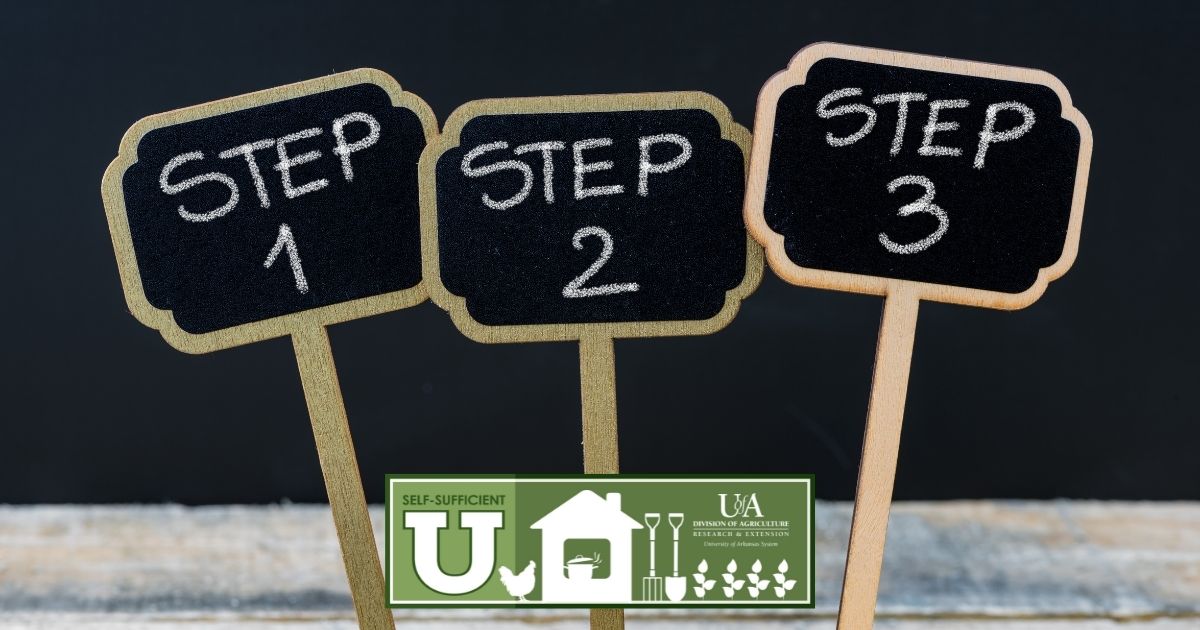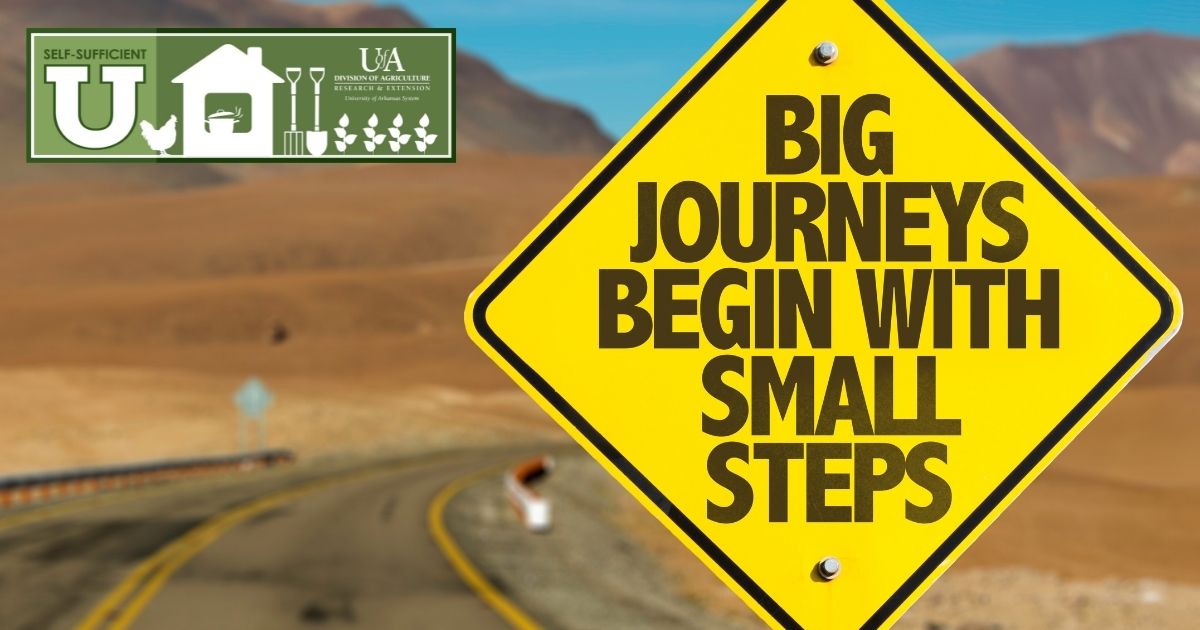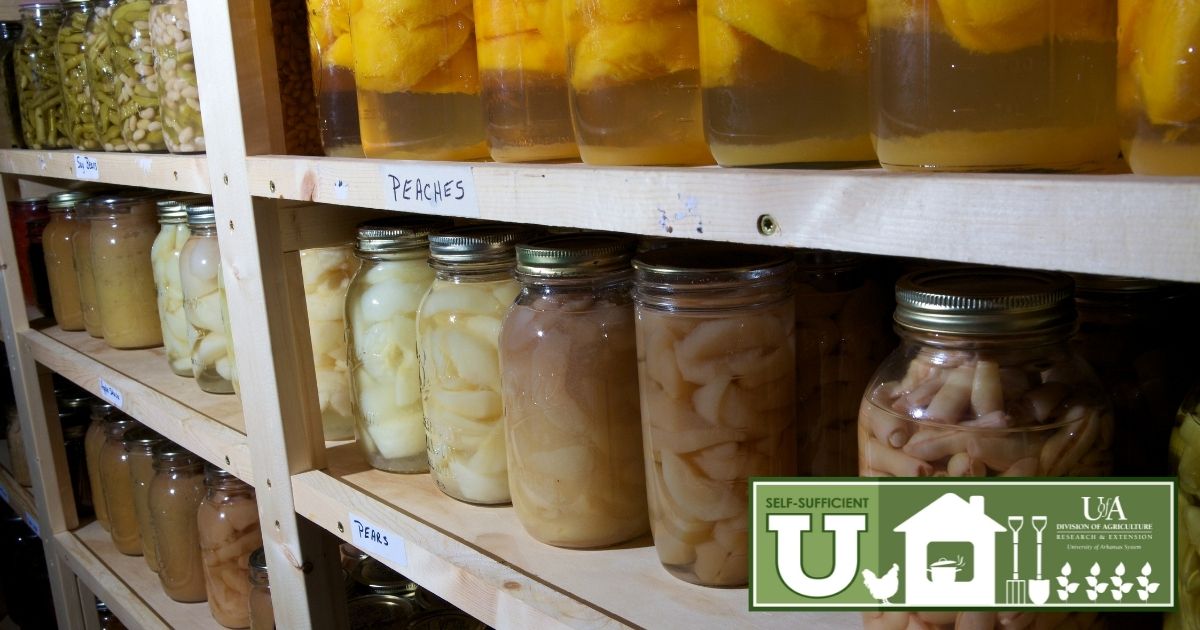Self-Sufficient U
Contact
Clark County Extension Service
Amy Simpson, Horticulture
Cindy Ham, 4-H and Ag
JoAnn Vann, Family & Consumer Sciences
Phone: 870-246-2281
Email: clark-arkadelphia@uada.edu
Follow us on
Facebook
Clark County
Cooperative Extension Service
640 S 6th Street Suite B
Arkadelphia, AR 71923

Three Steps to Kickstart Self-Sufficiency in 2022
This is the year to develop a self-sufficiency plan that fits your family and home.
By JoAnn Vann
Sick of getting to the store and what you need is nowhere to be found? Tired of wasting time searching multiple locations for items only to pay a premium price if you find it? I know I am! I think one of the biggest lessons we have learned since the pandemic started in March 2020 is just how dependent we are on running to the store expecting to find what we need quickly, cheaply, and in abundance. And don’t even get me started on how deeply labor shortages have affected our ability to get just about anything done in a timely, cost-effective manner. If this experience has been a big wake up call to you like many others, here are the first steps you can take to reduce the stress of supply chain shortages as well as saving you some hard-earned cash in the process.
Step 1: Develop a plan that fits your family size and home needs.
- Take inventory of food and household supplies you have on hand (yes, toilet paper being a key item). What items have you been unable to get consistently, in the quantity or quality you needed, or at a reasonable price? Also, consider what items would make life difficult if you were not able to get them in the future. These are key areas to brainstorm how much you should stock or if you can switch to another type of item.
- Identify any areas of waste. Are you chunking your food scraps in the trash? Do you look at that plastic wrap you used on last nights leftovers and think “What a waste”? How about all the plastic bottles that go in the trash? Maybe its clothes that no longer fit or have stains? Many of these items can be up-cycled into useful home items or contribute to your gardening endeavors.
- Identify common emergencies that could happen to you. How safe is your home? Can you complete basic home repairs if a water line bust or leaks? What would you do if your car had a dead battery or a flat tire? What if the electricity were out for more than a few hours?
- Look for gaps in knowledge and skills. Take your brainstorm list and determine what new knowledge and skills you will need to implement your plan.
Step 2: Implement Your Changes in Small Steps.
Dream big but take it one step at a time! Nothing will sabotage your efforts faster than trying to change too much too soon. Implement the most critical changes first:
- Start an emergency kit to weather short -term disruptions. These can be from the crazy weather, unexpected power outages, and illnesses as we all learned from COVID quarantine.
- Save money and shopping headaches by creating a stockpile of non-perishable items when they are lower in cost and easy to find.
- Set goals around your values. For example, you enjoy knowing where your food comes from so you want to raise your own chickens for fresh eggs.
- Dedicate time to learning new skills needed to be successful in your self-sufficiency journey. Sign up for our Self-Sufficient U classes and workshops as they become available.
Step 3: Plan for longer-term sufficiency
- Learn food preservation techniques such as freezing, drying, water bath and pressure canning.
- Learn long-term food storage techniques for bigger stockpiles and keeping your emergency kit food safe
- Invest in the tools needed to execute your newly gained skills. Things like a chest freezer, gardening equipment, and storage containers can make self-sufficient living much easier and free up time and money so you can move toward the next step in your plan.
- What bigger changes do you want to make? Have you considered solar power? Adding large livestock? Beekeeping? Selling your homemade products? The list of possibilities is endless and highly customizable based on your specific needs.
These three steps will kickstart your journey toward self-sufficiency. Whether your goal is to get off the grid, be better prepared for emergencies, or simply not be hassled with the extra time and expense of supply chain shortages, we are here to help you along the journey.
Follow us on this blog, our Self-Sufficient U Facebook Page, or on Instagram and join our newsletter list for all the latest on self-sufficient living.
Related resources
Grow Your Own Groceries:
Gardening from the Ground UP:
Beekeeping - Apiculture in Arkansas
Take the Hobby and Small Flock Poultry in Arkansas course
Arkansas Food Freedom Act for homemade food sales
Arkansas Emergency Preparedness
Food Preservation:
Podcasts:
Around the Homestead Podcast:
Beekeeping Basics Podcast